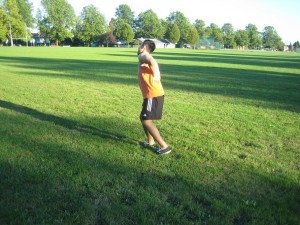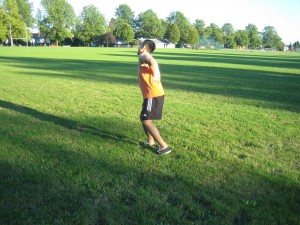Even though heat rash is considered common, it is not as common as what many parents believe who tend to consider any red-colored rash due to the heat while outdoors.
Being able to differentiate heat rash from other common rashes such as eczema, impetigo, poison ivy rash and folliculitis can be useful in order to properly manage and prevent the skin issue.
A heat rash is instigated in some children if they are overheated either due to being overdressed or it is too warm outdoors. Once they become too warm and start to sweat, the sweat ducts are blocked and eventually rupture.
Prickly heat
Miliaria rubra or prickly heat is the most prevalent form of heat rash. The sweat ducts are inflamed and reddened that might result to a stinging or prickly sensation. In addition, this form of heat rash can also cause minor itchiness.

The engorged sweat ducts appear similar to small-sized bumps with a reddened halo surrounding them and usually clumped together under clothing or within the skin folds such as the armpits, neck and groin. Babies who wear a hat might also develop a heat rash on the scalp and forehead.
Miliaria crystallina
Similar with prickly heat, this form of heat rash develops once the sweat ducts are clogged and rupture. The sweat ducts are positioned closer to the skin surface and do not become inflamed, thus resulting to the distinctive appearance of small-sized clear vesicles on the skin without any redness or other symptoms usually on the head, neck or upper chest.
Prevention of heat rash
Various methods on preventing heat rash usually aim on not allowing the child to become overheated along with the following:
- Dress the child in weather-appropriate, loose-fit clothes to prevent overheating.
- Avoid being exposed to excessive heat and humidity as much as possible.
- Avoid using occlusive creams or ointments including moisturizers or oil-based products on the skin since these can clog up the sweat ducts.
Treatment for heat rash
Even though that rash naturally vanishes within a few days, some children might need treatment such as the following:
- Transfer the child to a cool environment such as moving to an air-conditioned room or dress in cool clothes.
- Apply a compress immersed in cool water
- Apply a mild topical steroid but these are not needed in most cases
- Apply calamine lotion on affected skin
- Antibiotics can be used for secondary infections
Close look on heat rash
Heat rash is also called miliaria and quite common in infants and toddlers if they are overheated either due to the warm environment or they are overly dressed or running down with fever.
Miliaria profunda develop among individuals who have recurrent episodes of prickly heat. As for miliaria pustulosa, it is a case of prickly heat that becomes infected. Take note that folliculitis is often confused with prickly heat but there is a difference. The rash of prickly heat does not involve the hair follicles.

